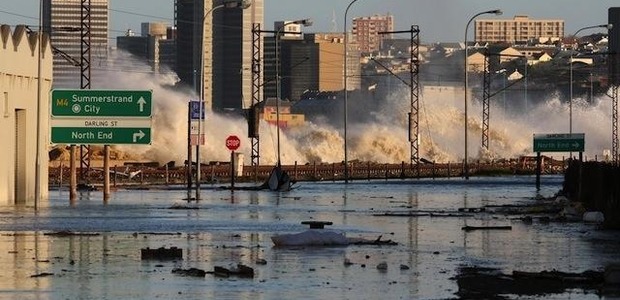advertisement
#wtis2016: ICTs have a central role in measuring disaster risk and resilience in SDGs
ICTs have a central role in measuring the disaster risk and resilience in Sustainable Development Goals (SDGs). This was said…

ICTs have a central role in measuring the disaster risk and resilience in Sustainable Development Goals (SDGs).
This was said during the ICT indicators for disaster risk reduction session at the ongoing World Telecommunications Indicators Symposium in Gaborone Botswana.
According to some statistics by ITU, close to US$ 314 billion is projected as the annual loss to national economies globally for disasters (excluding drought and key sector losses such as agriculture not yet properly accounted for).
advertisement
Natural disasters have devastating effects on human beings and cause economic loss, particularly in the world’s most vulnerable regions. Two of the major development plans agreed upon in 2015 by UN recognize the importance of these challenges.
The two plans were The 2030 Agenda for Sustainable Development calls for building resilience to disasters and the Sendai Framework for Disaster Risk Reduction.
Sendai Framework for Disaster Risk Reduction is an international Treaty which was approved by UN member states in March 2015 at the World Conference on Disaster Risk Reduction held in Sendai, Japan. It is the successor agreement to the Hyogo Framework for Action (2005–2015), which had been the most encompassing international accord to date on disaster risk reduction.
advertisement
The Sendai Framework for Disaster Risk Reduction has set specific goals to build resilience, and to improve disaster management through prevention, preparedness, and response. Through the framework, technological innovations, and in particular ICTs, provide unprecedented opportunities to effectively address the issue of climate change and to provide critical tools for disaster monitoring, early warning, and emergency response efforts.
The Sendai Framework for Disaster Risk Reduction, is based on four key pillars understanding risk, strengthening resilliance, offsetting risks,early warning systems and preparedness.
On risk reduction, technologies around space technology application and GIS for hazard monitoring and risk identification were found to be key. Access to ICT as a proxy of access to risk nformation through the use of mobile cellular network coverage, proportion of households with a radio, a TV, a computer and internet access at home could as well help address Disaster Risks.
advertisement
Big data and analytics plus social media also dominated the conversation as new and emerging technologies that can be used to address and mitigate disasters.
For instance Seiji Takagi, Director-General for International Affairs, Global ICT Strategy Bureau, Ministry of Internal Affairs and Communications, Japan pointed out, “ You may think that real-time conversations on twitter may not be important for disaster risk management. Twitter data is massive and this gives us information that we get to analyze on our DISAANA platform and make real-time decisions in case of disasters. After the Great East earthquake, Ministry of Internal Affairs and Communications of Japan (MIC) enhanced policies for quick restoration of ICT infrastructure when a disaster happens. These measurements ensured these effects at the Kumamoto earthquake in last April. These measurements might be useful as indicators for disaster risk management. Japan is contributing to international communities through the ICT disaster risk management solution.”
Among the key data tools that Japan was using to address disaster risk were an Emergency Warning Broadcasting System (ewbs), another platform was DISAANA, (Disaster Information Analyzer)an analytical tool that gives only useful information by providing compact answers. The tool analyzes data from the social platforms.
MIC of Japan also uses a platform called L-Alert a platform that disseminates information to Japan Citizens in real time in case there is a looming disaster.
In conclusion, to for ICTs to contribute to Sendai Framework there was need to use existing ICT data that can help contribute to measuring disaster risk, vulnerable group and target population for early warning systems. However, there was a call for further ICT indicators required for Sendai and a call to have ICT infrastructure loss to disasters to be measured.